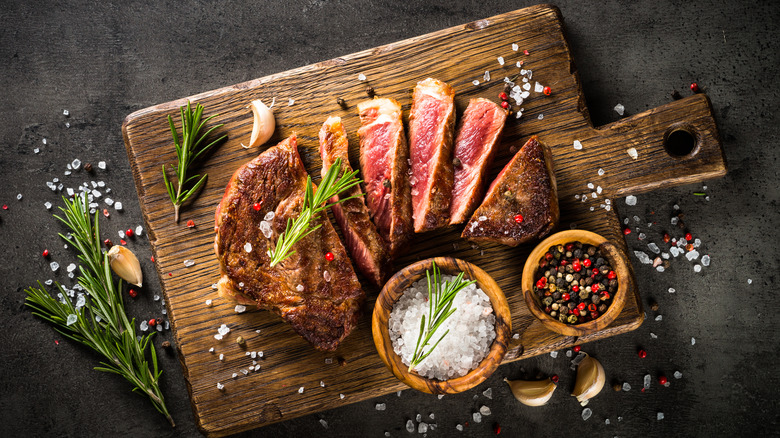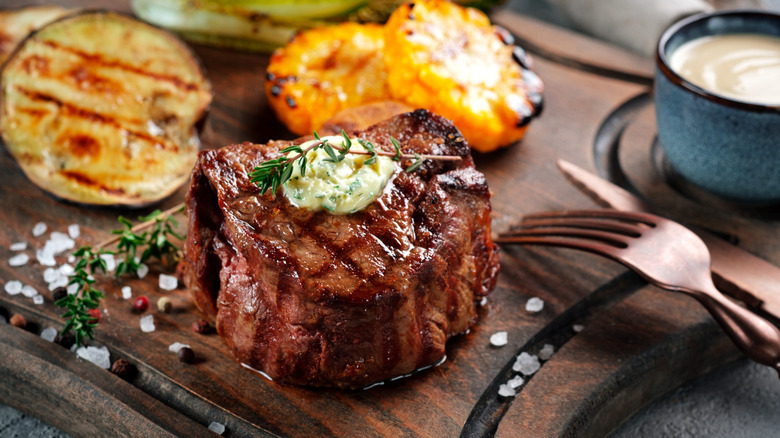How Long It Takes Dry Seasonings To Fully Release Their Flavors In A Dish
If food was anything like music, the meats or vegetables would be the performers, while the spices and seasonings could be thought of as the sound mixers and producers. Essentially, while lean meats and hearty vegetables are the ones delivering the performance, it's the behind-the-scenes notes of spice that tie everything together to put on a fantastic show. But as much as the culinary arts are, well, an art, they're also a science. This means that depending on how you want your dry seasonings to perform in a dish, you have to consider how their timing comes into play.
For even the most basic of dry seasonings, adding them in at the right time can affect the overall result of the flavor. For example, salt releases its flavor instantly, so it doesn't need to sit for a while to determine how it might taste upon serving. On the other hand, ingredients like black pepper, dried herbs, and seasoning blends release their flavors over time, so allowing them to sit for at least 15 minutes before tasting is to your benefit. Otherwise, it can be very easy to add way too much.
What's more, how much you add also plays a part. While there are no rules for how much seasoning you should or shouldn't add to a recipe, most recipes you come across were thoroughly tested by seasoned chefs and experienced cooks, so it's a good idea to start with what's listed in the recipe. Then, slowly add in more, waiting 15 minutes each time before tasting.
Using time to your advantage
Depending on the particular dried herbs and seasonings in a dish, you can choose to add them at the beginning or end of cooking. For instance, if you're making a garlic-based meal, you really want those bold and savory notes of garlic to stand out. Here, we would recommend adding garlic salt or powder after everything else has cooked. Once the seasonings are incorporated, give the dish a good 15 minutes of simmering — not cooking — to allow the flavor to shine and become distinct. This works particularly well for dishes that need to cook for extended periods like stews and soups, during which seasonings can get lost from so much time on the stove.
If you are looking to merge flavors for a more blended taste, add in the dry seasonings before cooking. This way, everything cooks at the same time, has ample time to marry together, and it creates a nice balance of flavors. The 15-minute rule still applies here, but only when adding in new or more seasonings than you initially put in. If you're working with a time-sensitive cuisine like a steak and can't do much taste testing in the cooking process, just ensure that the seasonings have sat on the steak for a least 15 minutes before cooking.

